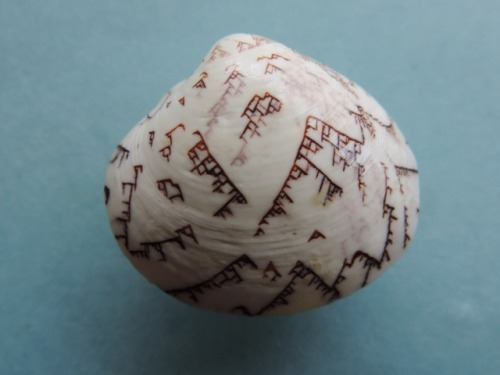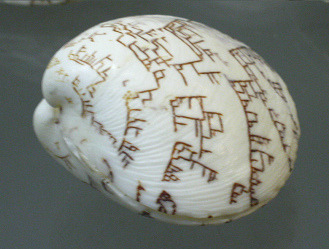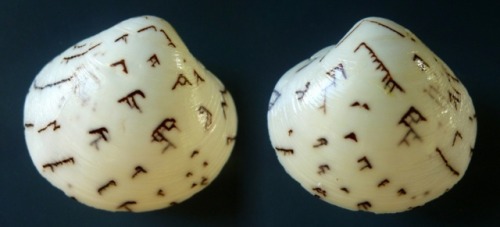This Slender-snouted Crocodile Skull In Carnegie Museum Of Natural History’s Alcohol House Was Used

This slender-snouted crocodile skull in Carnegie Museum of Natural History’s Alcohol House was used to determine that each African region had a unique crocodile species. You can see this skull and its story on display at the new We Are Nature. Look for the Alcohol House media interactive in the gallery!
This post was originally posted on our curatorial assistant’s Instagram, which features specimens in the museum’s historic Alcohol House.
More Posts from In-pursuit-of-knowledge-blog and Others
Research is formalized curiosity. It is poking and prying with a purpose.
Zora Neale Hurston (via berghahnbooks)
The Hunt for New Worlds Continues with TESS
We’re getting ready to start our next mission to find new worlds! The Transiting Exoplanet Survey Satellite (TESS) will find thousands of planets beyond our solar system for us to study in more detail. It’s preparing to launch from our Kennedy Space Center at Cape Canaveral in Florida.

Once it launches, TESS will look for new planets that orbit bright stars relatively close to Earth. We’re expecting to find giant planets, like Jupiter, but we’re also predicting we’ll find Earth-sized planets. Most of those planets will be within 300 light-years of Earth, which will make follow-up studies easier for other observatories.

TESS will find these new exoplanets by looking for their transits. A transit is a temporary dip in a star’s brightness that happens with predictable timing when a planet crosses between us and the star. The information we get from transits can tell us about the size of the planet relative to the size of its star. We’ve found nearly 3,000 planets using the transit method, many with our Kepler space telescope. That’s over 75% of all the exoplanets we’ve found so far!

TESS will look at nearly the entire sky (about 85%) over two years. The mission divides the sky into 26 sectors. TESS will look at 13 of them in the southern sky during its first year before scanning the northern sky the year after.

What makes TESS different from the other planet-hunting missions that have come before it? The Kepler mission (yellow) looked continually at one small patch of sky, spotting dim stars and their planets that are between 300 and 3,000 light-years away. TESS (blue) will look at almost the whole sky in sections, finding bright stars and their planets that are between 30 and 300 light-years away.

TESS will also have a brand new kind of orbit (visualized below). Once it reaches its final trajectory, TESS will finish one pass around Earth every 13.7 days (blue), which is half the time it takes for the Moon (gray) to orbit. This position maximizes the amount of time TESS can stare at each sector, and the satellite will transmit its data back to us each time its orbit takes it closest to Earth (orange).

Kepler’s goal was to figure out how common Earth-size planets might be. TESS’s mission is to find exoplanets around bright, nearby stars so future missions, like our James Webb Space Telescope, and ground-based observatories can learn what they’re made of and potentially even study their atmospheres. TESS will provide a catalog of thousands of new subjects for us to learn about and explore.

The TESS mission is led by MIT and came together with the help of many different partners. Learn more about TESS and how it will further our knowledge of exoplanets, or check out some more awesome images and videos of the spacecraft. And stay tuned for more exciting TESS news as the spacecraft launches!
Watch the Launch + More!

Sunday, April 15 11 a.m. EDT - NASA Social Mission Overview
Join mission experts to learn more about TESS, how it will search for worlds beyond our solar system and what scientists hope to find! Have questions? Use #askNASA to have them answered live during the broadcast.
Watch HERE.
1 p.m. EDT - Prelaunch News Conference
Get an update on the spacecraft, the rocket and the liftoff operations ahead of the April 16 launch! Have questions? Use #askNASA to have them answered live during the broadcast.
Watch HERE.
3 p.m. EDT - Science News Conference
Hear from mission scientists and experts about the science behind the TESS mission. Have questions? Use #askNASA to have them answered live during the broadcast.
Watch HERE.
4 p.m. EDT - TESS Facebook Live
This live show will dive into the science behind the TESS spacecraft, explain how we search for planets outside our solar system and will allow you to ask your questions to members of the TESS team.
Watch HERE.
Monday, April 16 10 a.m. EDT - NASA EDGE: TESS Facebook Live
This half-hour live show will discuss the TESS spacecraft, the science of searching for planets outside our solar system, and the launch from Cape Canaveral.
Watch HERE.
1 p.m. EDT - Reddit AMA
Join us live on Reddit for a Science AMA to discuss the hunt for exoplanets and the upcoming launch of TESS!
Join in HERE.
6 p.m. EDT - Launch Coverage!
TESS is slated to launch at 6:32 p.m. EDT on a SpaceX Falcon 9 rocket from our Kennedy Space Center in Florida.
Watch HERE.
Make sure to follow us on Tumblr for your regular dose of space: http://nasa.tumblr.com
this is so rare!!! and it’s not albino, because its eyes are the usual color instead of pinkish- it’s the same gene that gives some moose white spots!
Nature spirit.
Ave Imperator! We who are about to nap salute you!














Lioconcha Hieroglyphica is officially my favorite mollusc

Did you know that Uranus was (accidentally) discovered on this day in 1781, the first planet to be discovered with the aid of a telescope? At first, British astronomer William Herschel thought the object in the sky to be a star or comet, but within two years, other astronomers showed it was a new planet orbiting the Sun. The ice giant is four times wider than the Earth and appears blue due to the methane in its atmosphere. Photo: NASA
“The State of Archaeology”
Such a scary title right? Well, boy oh boy do I have an adventure for you today.
So, I was at a really bougie historic preservation conference because my bosses were presenting. The last panel I went to was supposed to cover the kinds of issues with Cultural Resource Management (CRM) the state was coming across.
They ended up talking about how all of this would kind of be fixed if we had more funding from the state and more robust laws surrounding archaeological materials.
But this was a room of basically only archaeologists, and mostly professional archaeologists over the age of 35. We were in such an echo chamber. I was the only “young” student there.
SO. I start getting pissed because the same people just kept practically saying “but HOW do we fix our funding problem, we have such AWESOME sites.” “oh, the public is definitely a vital piece to archaeology” but no one was saying the (what I thought was) obvious.
TL;DR If archaeologists want to fix their problems, they need to DO something about it instead of sitting in an echochamber. WE need to make sure the public knows what we do, and more importantly, WHY it matters. We need to make sure the information we disseminate is not just for ourselves in the present, but for the public, for EVERYONE, and for everyone in perpetuity.
yes and that’s a happy fact


erasermic.png

did you know that octopi have three hearts and nine brains? They’re very efficient and clever and this one is very cute.
just woke up from one hell of a nightmare i need a distraction…
-
 crysezad reblogged this · 7 years ago
crysezad reblogged this · 7 years ago -
 corvus69 liked this · 7 years ago
corvus69 liked this · 7 years ago -
 in-pursuit-of-knowledge-blog reblogged this · 7 years ago
in-pursuit-of-knowledge-blog reblogged this · 7 years ago -
 in-pursuit-of-knowledge-blog liked this · 7 years ago
in-pursuit-of-knowledge-blog liked this · 7 years ago -
 poopyscoop6ix9ine-blog liked this · 7 years ago
poopyscoop6ix9ine-blog liked this · 7 years ago -
 museumwales liked this · 7 years ago
museumwales liked this · 7 years ago -
 tillsunbeamsfindyou reblogged this · 7 years ago
tillsunbeamsfindyou reblogged this · 7 years ago -
 girl-not-woman-blog liked this · 7 years ago
girl-not-woman-blog liked this · 7 years ago -
 girl-not-woman-blog reblogged this · 7 years ago
girl-not-woman-blog reblogged this · 7 years ago -
 birds-and-friends-blog liked this · 7 years ago
birds-and-friends-blog liked this · 7 years ago -
 myunabashedsweetscollection-blog liked this · 7 years ago
myunabashedsweetscollection-blog liked this · 7 years ago -
 pitanguinha56-blog liked this · 7 years ago
pitanguinha56-blog liked this · 7 years ago -
 janthina-exigua-blog liked this · 7 years ago
janthina-exigua-blog liked this · 7 years ago -
 ace-delynsss liked this · 7 years ago
ace-delynsss liked this · 7 years ago -
 heaveninawildflower liked this · 7 years ago
heaveninawildflower liked this · 7 years ago -
 cloudair liked this · 7 years ago
cloudair liked this · 7 years ago -
 cucumberous liked this · 7 years ago
cucumberous liked this · 7 years ago -
 paleontologylife reblogged this · 7 years ago
paleontologylife reblogged this · 7 years ago -
 paleontologylife liked this · 7 years ago
paleontologylife liked this · 7 years ago -
 squidinyourboot liked this · 7 years ago
squidinyourboot liked this · 7 years ago -
 g63heavenonearth liked this · 7 years ago
g63heavenonearth liked this · 7 years ago -
 vaultsy liked this · 7 years ago
vaultsy liked this · 7 years ago -
 detroitlib liked this · 7 years ago
detroitlib liked this · 7 years ago -
 theupsidedownrat reblogged this · 7 years ago
theupsidedownrat reblogged this · 7 years ago -
 theupsidedownrat liked this · 7 years ago
theupsidedownrat liked this · 7 years ago -
 corpseofdiscovery-blog reblogged this · 7 years ago
corpseofdiscovery-blog reblogged this · 7 years ago -
 corpseofdiscovery-blog liked this · 7 years ago
corpseofdiscovery-blog liked this · 7 years ago -
 socially-awkward-wizard reblogged this · 7 years ago
socially-awkward-wizard reblogged this · 7 years ago -
 carnegiemuseumnaturalhistory reblogged this · 7 years ago
carnegiemuseumnaturalhistory reblogged this · 7 years ago
Once I was made of stardust. Now I am made of flesh and I can experience our agreed-upon reality and said reality is exciting and beautiful and terrifying and full of interesting things to compile on a blog! / 27 / ENTP / they-them / Divination Wizard / B.E.y.O.N.D. department of Research and Development / scientist / science enthusiast / [fantasyd20 character]
162 posts
